eCommerce Order Fulfilment Guide
While eCommerce has become a familiar concept, many still lack a deep understanding of its intricacies and the benefits it offers. As a business, understanding eCommerce fulfilment is crucial to ensuring your operations run smoothly and effectively. This guide will give you a clear idea about what eCommerce fulfilment is and how you can perfect it using just a handful of tips and tricks.
Ready to learn more? Then keep reading!
Understanding eCommerce Fulfilment
eCommerce fulfilment involves all processes from receiving inventory to delivering the product to the customer. It includes everything from order processing and picking to packing and shipping. For example, when a customer buys a product from your online store, the fulfilment process starts with processing the order and ends when the product is delivered to the customer.
The eCommerce Fulfilment Process: 6 Key Stages
To ensure a smooth eCommerce operation, it’s essential to understand each stage of the fulfilment process.
Stage 1: Receiving Inventory
The fulfilment process starts even before a customer places an order, with receiving inventory. This involves gathering products from manufacturers and suppliers and ensuring they are ready for sale. Key activities include:
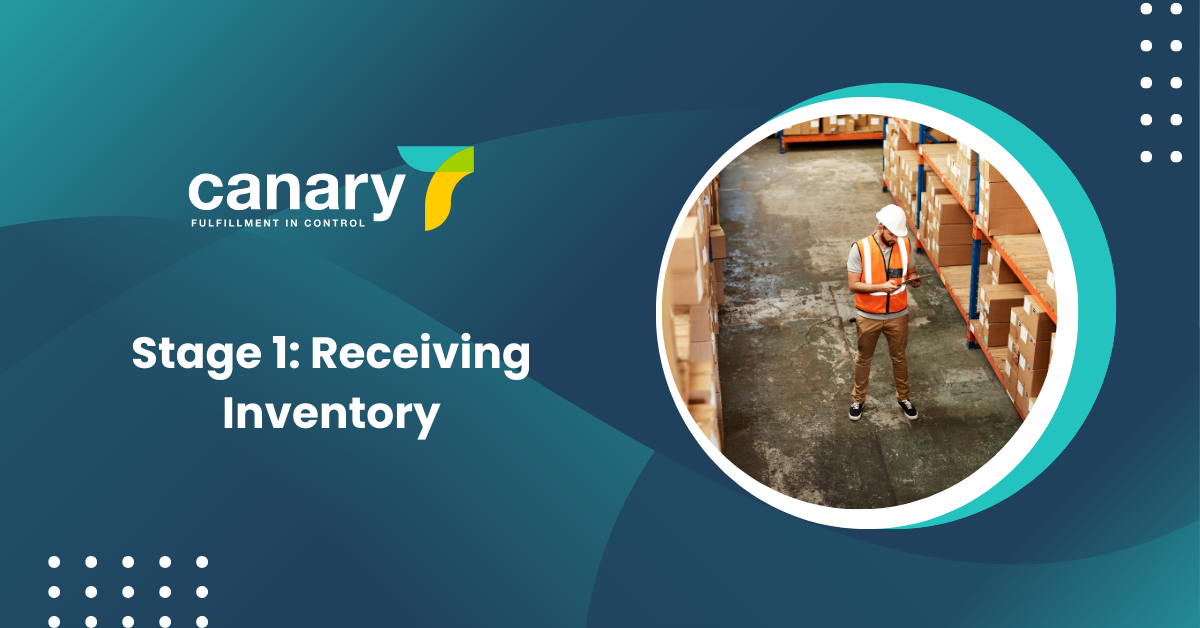
- Inspection: Check products for any damage or defects.
- Counting: Ensure accurate inventory counts to avoid fulfilment errors.
- Organising: Use SKUs to categorize and arrange products in the warehouse.
- Data Entry: Record inventory in your warehouse management system.
By meticulously managing this stage, you lay the groundwork for a smooth fulfilment process.
Key Takeaways:
Accurate inventory counts prevent fulfilment errors.
Proper organisation using SKUs speeds up subsequent fulfilment stages.
Recording inventory in management systems ensures data accuracy.
Stage 2: Organising Inventory
Properly organising your inventory is crucial for efficient fulfilment. Arrange stock systematically using SKUs. This helps your team navigate the inventory and execute other processes seamlessly.
Key Takeaways:
Organised inventory speeds up the picking process.
Efficient arrangement reduces the risk of errors during fulfilment.
Stage 3: Picking
Once an order is placed, the fulfilment process involves tracking it in your inventory. The fulfilment team then picks the item, preparing it for packing.
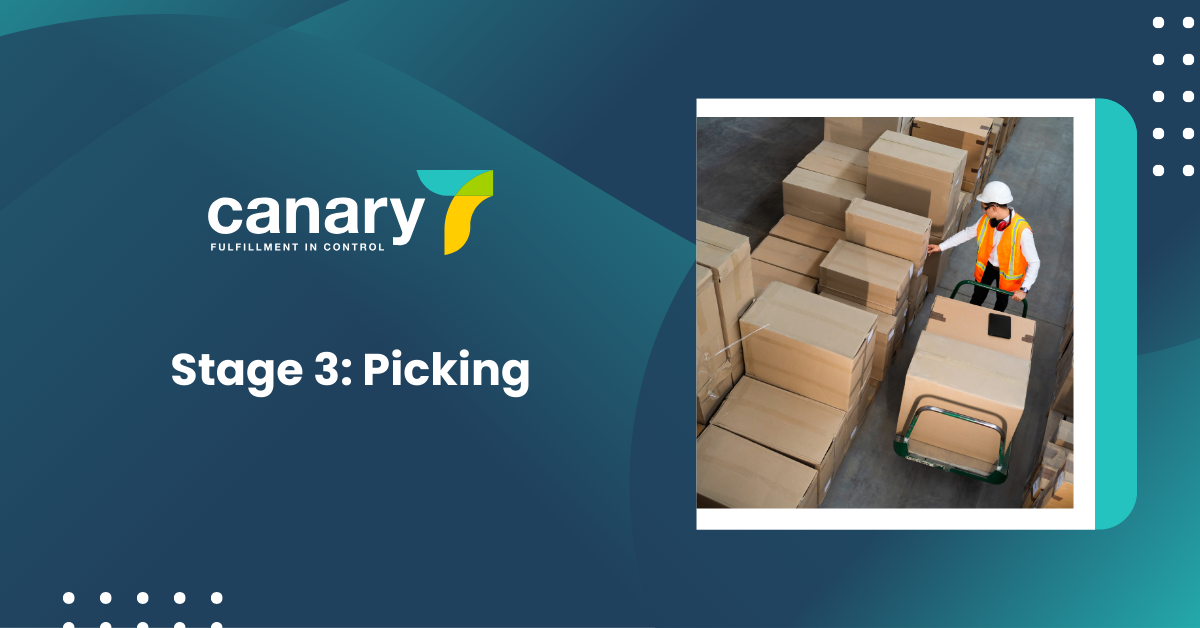
Key Takeaways:
Efficient picking reduces fulfilment time.
Accurate picking prevents order errors.
Stage 4: Packing
Pack the order securely using appropriate materials. Proper packaging ensures safe delivery to the customer.
Key Takeaways:
Secure packaging protects products during transit.
Appropriate materials enhance the customer’s unboxing experience.
Stage 5: Shipping
Choose a reliable shipping method to send products to customers. Fast and flexible shipping improves customer satisfaction.
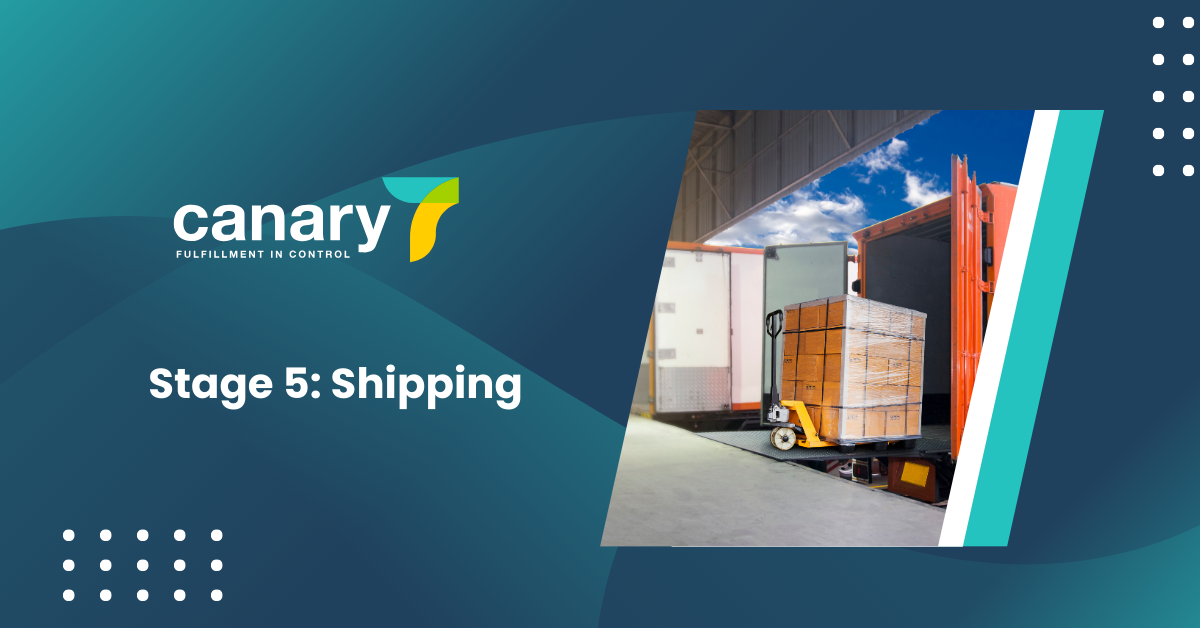
Key Takeaways:
Reliable carriers ensure timely delivery.
Offering multiple shipping options caters to different customer needs.
Stage 6: Exchange/Return
Efficient handling of returns is crucial for customer satisfaction. Include exchange and return processes in your fulfilment strategy.
Key Takeaways:
Efficient return processes enhance customer experience.
Handling returns effectively is part of a comprehensive fulfilment strategy.
Choosing the Right Fulfilment Method
Choosing the right fulfilment approach depends on your business’s unique needs. Here’s a breakdown of the most common methods to help you decide:
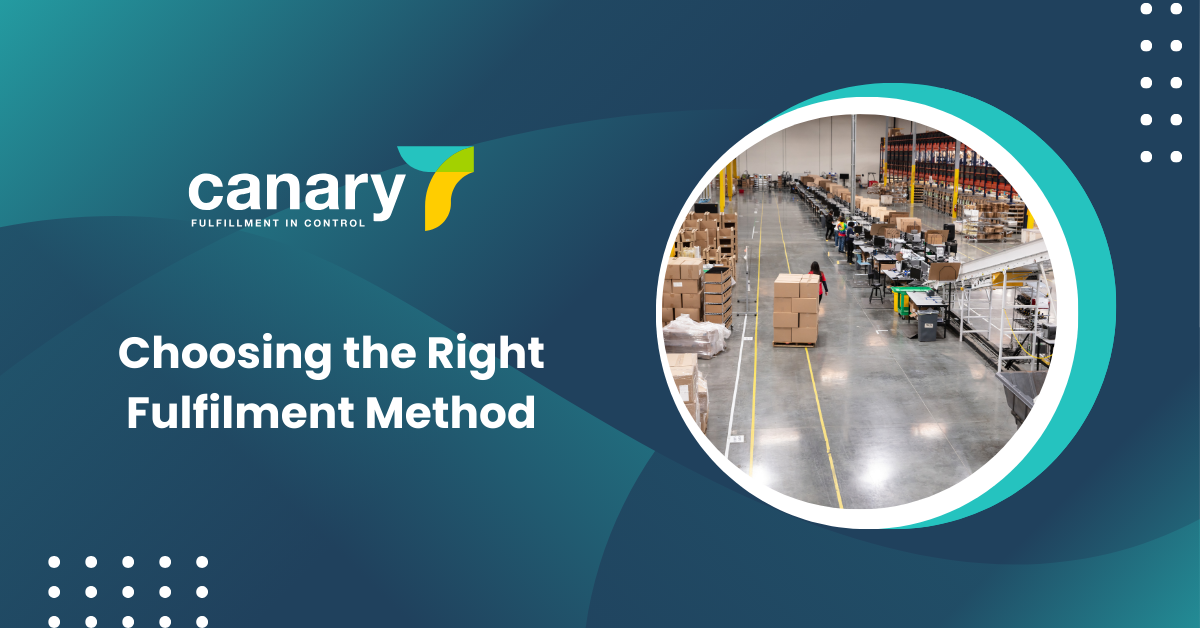
Merchant Fulfilment (Self-Fulfilment)
Ideal for businesses starting out or with a low order volume. You manage the entire process yourself, offering greater control but potentially higher workload.
Benefit: Cost-effective for smaller businesses.
Third-Party Logistics (3PL)
Outsource your fulfilment to a specialist company. Perfect for businesses experiencing growth or wanting to offer faster delivery options.
Benefit: Saves you time and resources, allowing you to focus on core business activities.
Drop Shipping
The manufacturer or wholesaler ships directly to your customer. A good option for businesses with limited storage space or a wide product variety.
Benefit: Low upfront costs and minimal inventory management.
Factors to Consider
When choosing a fulfilment method, consider these factors:
- Order Volume: Can you handle the picking and packing yourself, or is it time to outsource?
- Product Size and Weight: Larger or heavier items may require a 3PL’s expertise.
- Delivery Speed: Do you need to offer fast shipping options like same-day delivery?
- Budget: Compare the costs of each method before deciding.
Optimizing Your Fulfilment Process
Once you’ve chosen your fulfilment method, streamline each stage for maximum efficiency:
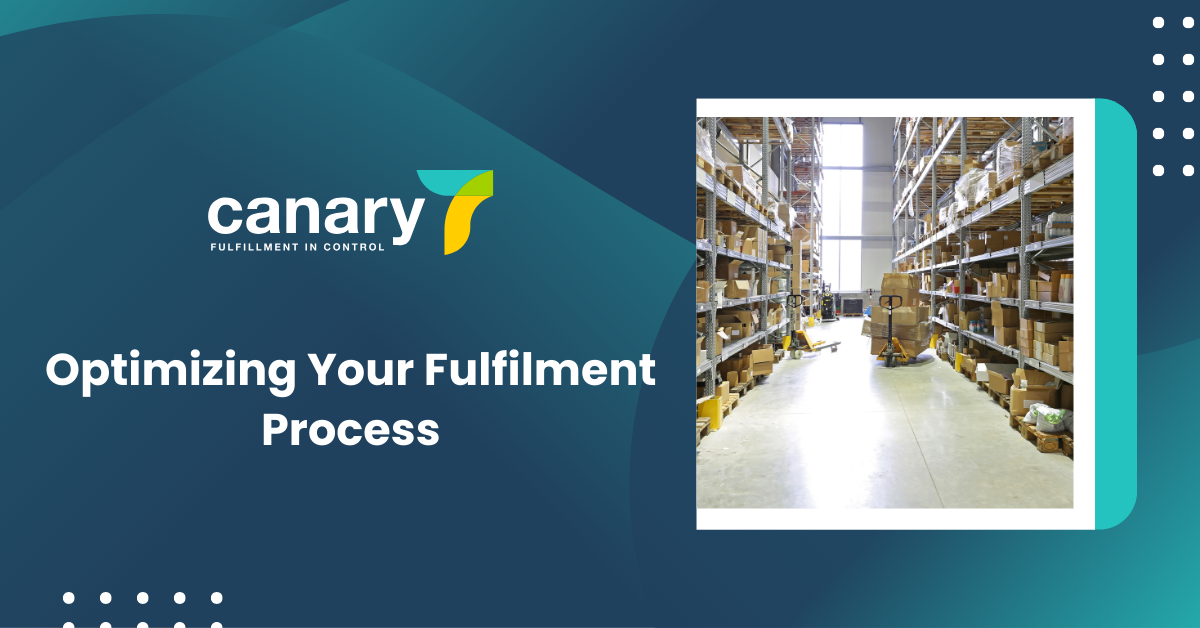
Inventory Management
Invest in a robust inventory management system to avoid stockouts and overstocking. Regularly track inventory levels and reorder points.
Warehouse Organisation
A well-organised warehouse saves time and reduces picking errors. Utilize clear labeling, strategic product placement, and efficient picking routes.
Picking and Packing
Implement a picking system (e.g., pick lists, barcode scanners) to ensure accuracy and speed. Use the right packaging materials to protect your products during shipping.
Shipping
Choose reliable shipping carriers that offer competitive rates and meet your delivery speed requirements. Consider offering a variety of shipping options to cater to different customer needs.
By following these tips, you can transform your fulfilment process from a bottleneck to a competitive advantage!
The Power of Automation
Imagine a world where orders are picked, packed, and shipped almost magically, freeing up your valuable time and resources. This isn’t science fiction; it’s the power of automation in eCommerce fulfilment.
Automating repetitive tasks like order processing, inventory management, and label printing can significantly improve efficiency and accuracy.
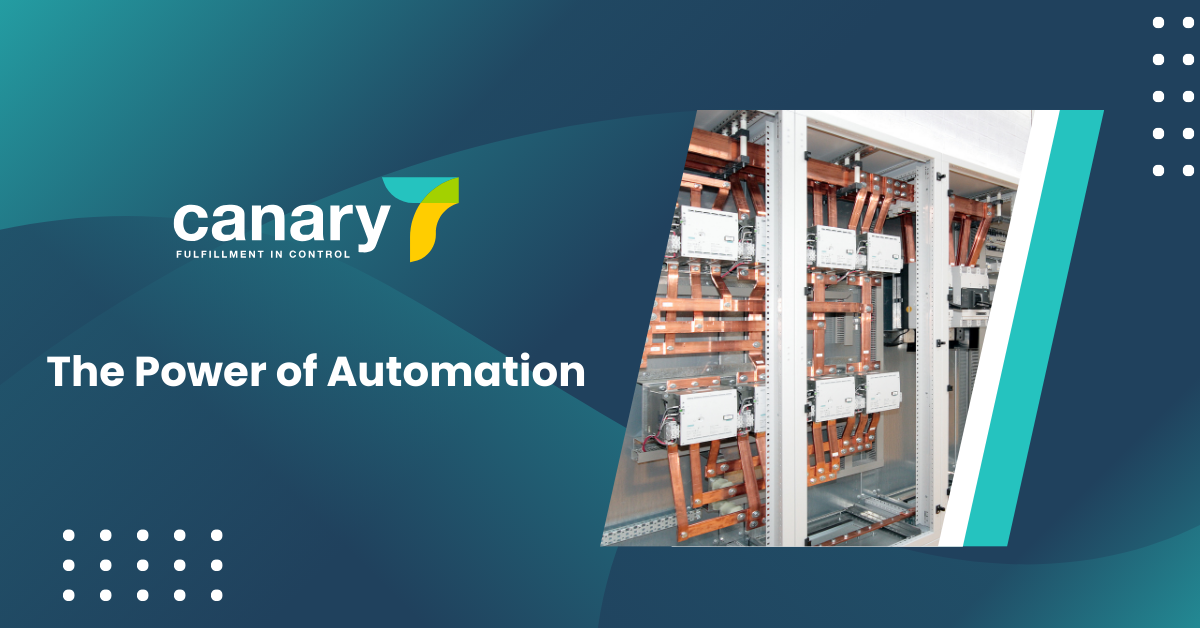
Benefits of Automation:
Reduced Errors: Automation minimizes mistakes, leading to fewer order fulfilment issues and happier customers.
Increased Speed: Streamlined processes enable you to fulfil orders faster and meet important delivery deadlines.
Improved Scalability: As your business grows, automation allows you to handle increased demand without a significant increase in manual labor.
Cost Savings: While there may be an upfront investment in automation technology, the long-term benefits often outweigh the cost.
Examples of Automation in Fulfilment:
- Order Management Systems (OMS): Automate order processing tasks like generating pick lists, sending shipping notifications, and managing returns.
- Warehouse Management Systems (WMS): Optimize warehouse operations by tracking inventory levels, managing stock location, and directing pickers to the most efficient routes.
- Inventory Management Software: Automatically track inventory levels, generate purchase orders, and send alerts when stock levels reach reorder points.
- Shipping Software: Simplify shipping by automating label printing, carrier selection, and shipment tracking.
Remember, automation is not a replacement for human expertise. It’s a tool to empower your team and free them to focus on higher-level tasks like customer service and strategic planning.
Planning Your eCommerce Fulfilment Strategy
To develop an effective fulfilment strategy, follow these actionable steps:
- Assess Your Current Fulfilment Process: Identify and address areas needing improvement.
- Choose the Right Fulfilment Method: Select between self-fulfilment, 3PL, or dropshipping based on your needs.
- Implement Technology Solutions: Use inventory and order management systems to streamline operations.
- Train Your Team: Ensure your team is well-versed in the fulfilment process.
- Monitor and Optimize: Regularly review and refine your strategy for continuous improvement.
The Road to Fulfilment Success
A well-defined fulfilment strategy is a cornerstone of any successful eCommerce business. By understanding your options, optimizing your processes, and embracing automation, you can ensure your customers receive their orders quickly and reliably, fostering trust and loyalty that keeps them coming back for more.
Conclusion
In summary, mastering eCommerce fulfilment is crucial for your business success. By understanding the process, choosing the right strategies, and continuously optimizing your operations, you can ensure a seamless experience for your customers. Ready to take your eCommerce fulfilment to the next level? Contact Canary7 today to learn more about our comprehensive automation solutions!
FAQs
1. What is eCommerce fulfilment?
eCommerce fulfilment involves all processes from receiving inventory to delivering the product to the customer. It includes everything from order processing and picking to packing and shipping.
2. How can a Warehouse Management System help in eCommerce fulfilment?
A Warehouse Management System (WMS) helps optimize warehouse operations by tracking inventory levels, managing stock location, and directing pickers to the most efficient routes. This streamlines the fulfilment process and improves efficiency.
3. What are the benefits of using Inventory Management Software in fulfilment?
Inventory Management Software helps automatically track inventory levels, generate purchase orders, and send alerts when stock levels reach reorder points. This prevents stockouts and overstocking, ensuring a smooth fulfilment process.
4. How can automation improve eCommerce fulfilment?
Automation reduces errors, increases speed, and improves scalability in the fulfilment process. It allows businesses to handle increased demand without a significant increase in manual labor, leading to cost savings and better customer satisfaction.
5. Why should I consider using a Third-Party Logistics (3PL) provider?
Using a Third-Party Logistics (3PL) provider can save time and resources, allowing you to focus on core business activities. 3PL providers have expertise in managing fulfilment processes, offering faster delivery options and improving customer satisfaction.

Mishal Khan
Author
UPDATED ON: 4th July 2024
Mishal is a dedicated copywriter and content writer with experience across various niches. Currently, Mishal is focused on writing guides and other compelling blogs on warehouse management, logistics and more, crafting engaging and informative content to help businesses understand and master their supply chain. Passionate about delivering quality content, Mishal aims to make complex topics accessible and enjoyable for all readers.
Subscribe to get latest posts straight in your inbox.